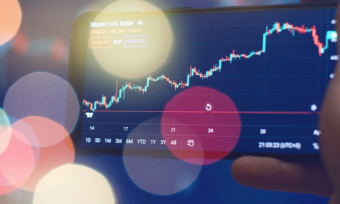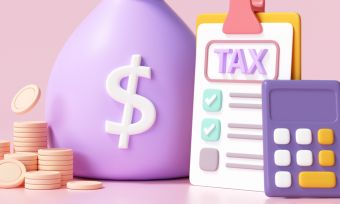
KiwiSaver Funds - June 4th
KEY POINTS: Sharesies' KiwiSaver gives you the option to pick between seven base funds, across the conventional KiwiSaver risk profiles. Six of the base funds are offered by financial management companies that are also KiwiSaver providers.…
– Read more
KiwiSaver Funds - May 26th
KEY POINTS: From next year, KiwiSaver members who contribute $1042.86 per year (July 1 to June 30) will only receive $260.72 from the government. Over the next three years, default member contributions and employer KiwiSaver payments…
– Read more
KiwiSaver Funds - May 21st
According to the most recent KiwiSaver report, there are 3.33 million KiwiSaver members, who have $111.8bn invested across 38 schemes. Between those providers there are over 300 different funds, offering a wide range of investment options,…
– Read more
KiwiSaver Funds - May 16th
KEY POINTS: Employee KiwiSaver contributions are not taxed directly, but come out of an employee's gross salary, on which income tax is paid. Employers pay Employer Superannuation Contribution Tax (ESCT) on their KiwiSaver contributions, rates range…
– Read moreKiwiSaver is the retirement savings scheme in New Zealand. It was introduced in July 2007.
In the KiwiSaver scheme, members build savings through regular contributions from their before-tax pay, from their employer, and from the Government. Joining is voluntary.
It does not replace New Zealand Superannuation (NZ Super), so you can receive super payments and have a KiwiSaver fund at the same time.
NZ Super is the government’s pension scheme available to most New Zealand residents over 65 years old, regardless of how much they earn or how many investments they have.
KiwiSaver can also come in handy before you retire. You can access your savings to purchase a first home, or if you need the funds because of financial hardship.
KiwiSaver savings build up over time. Contributions are paid to your KiwiSaver fund by you, your employer, and the government. These contributions are invested by your provider in your chosen scheme.
Your provider charges fees, and you pay tax on your investments, but, over the years, you should make long-term gains.
Most New Zealanders under the age of 65 are eligible to join KiwiSaver – even children! You can also join KiwiSaver if you are self-employed or unemployed. KiwiSaver membership is voluntary.
You can join KiwiSaver, if all three of these conditions apply:
Children under 16 can be enrolled in KiwiSaver by their parent/guardian. Children aged 16 or older can enrol in KiwiSaver themselves if they have a parent/guardian co-sign with them. Children are not eligible for government contributions until they turn 18.
The following people can put money into your KiwiSaver fund:
You make contributions to your KiwiSaver fund from your gross pay before tax. You choose which rate to contribute: 3%, 4%, 6%, 8% or 10% of your before tax pay. You can also make additional contributions.
Employers make a compulsory minimum contribution of 3% towards their employees’ KiwiSaver fund – unless they are already contributing to another superannuation fund for their employees.
The Government makes an annual contribution to your fund, as long as you have made a contribution during that financial year. This is called a member tax credit. If you contribute more than $1043 to your KiwiSaver fund, the government will contribute a full tax credit of $521.43. If you contribute less than $1,043, the government pays 50 cents for every dollar you contributed. The Government only contributes member tax credits to adult KiwiSaver members aged 18 or older.
Providers let you manage and access information on your KiwiSaver savings online or through phone apps.
Most people are eligible to access the retirement savings in their KiwiSaver fund when they turn 65, which is the age that you qualify for NZ Super. If you join KiwiSaver after you turn 60, you have to wait a minimum of 5 years before you can access your savings.
Alternatively, you may be able to make an early withdrawal of part or all of your savings when you:
There are several main types of KiwiSaver investments, from low risk (low volatility) to the high risk. Some common “mixed” funds include:
Bonds and Income (low risk): 100% bonds (50% NZ bonds, plus a mix of overseas government and non-government bonds).
Cash and Bonds / Defensive (low risk): Bank deposits and other fixed-interest investments, with 20% or less invested in growth assets, such as shares and property.
Conservative (low to medium risk): Mostly bank deposits and fixed-interest investments, with 30% shares and property.
Balanced (medium risk): 50%-60% evenly split between high-risk investments, such as shares and property, and lower risk investments, such as cash, bank deposits and fixed-interest investments.
Growth (medium to high risk): 70%-85% shares and property, with the remaining balance invested in bank deposits and fixed-interest investments.
Aggressive (high risk): 90% or more shares.
There are also KiwiSaver investments that are specific to a certain asset class. For example:
Cash
NZ Bonds
Overseas Government Bonds
Overseas non-Government Bonds
Property
NZ Shares
Australian Shares
Overseas Shares Currency Hedged
Overseas Shares (Unhedged)
Emerging Markets
UK Cash
Determining which type of KiwiSaver investment is right for you will, in part, be determined by your appetite for risk, and the number of years until retirement.
For example, someone who is about to retire will not want their retirement fund suddenly dropping in value just before they need to make a withdrawal.
On the other hand, short-term volatility may not worry someone who still has 20 years in the workforce.
KiwiSavers should seek professional advice when considering their fund choices.
If choosing specific KiwiSaver investments sounds too complicated, you might consider a life stages fund. This is a KiwiSaver fund that automatically adjusts your investment risk according to your age as you grow older.
Not all scheme providers offer all types of investment mix, so you should always check the options with your chosen provider.
There are three ways to join KiwiSaver:
KiwiSaver schemes are run by providers including banks and investment or superannuation companies. The government does not guarantee the success of any savings investment scheme, so you are responsible for the provider and investment options you choose.
Each provider has several investment options or funds. Each fund has a different mix of assets, such as fixed-interest bank deposits, bonds, shares and property.
Which KiwiSaver fund is the right one for you? You should choose an investment option that suits your preferred risk profile and the time frame within which you want to get a return and access your money. Here are some other things to think about:
Returns: The whole point of KiwiSaver is to build your savings by giving you some return on your investment. But a provider’s past performance doesn’t guarantee its future performance, because the investment market goes up and down constantly. Look for a consistent, long-term return, with a few riskier options added to the mix.
When Canstar looks at the return from scheme providers, we review their performance over the past five years, and consistently under-performing schemes never receive higher than a 3 Star rating.
Fees: Minimising fees will maximise the balance of your fund. You should note that providers can charge fees as a dollar amount, or a percentage of your balance, and usually both.
Investment options: Your investment expectations will change as you get older. When you’re in your 20s, you can afford to take on more risky investments, to try for a higher return, if that’s your choice.
But when you’re in your 40s and looking forward to retirement, you may not want to risk the savings that you’ve built up.
Look for flexibility to switch between funds or build your own personalised fund that suits your goals.
Financial advice: Professional financial advice takes away the stress of planning for your future and helps you make wiser investment decisions to reach your goals.
Some KiwiSaver providers offer free financial planning advice.
Educational tools: It can be hard to understand exactly how your scheme provider manages your fund. Look for a provider that offers educational information and tools.
Online access and mobile apps: Many providers offer online access and mobile apps that let you access up-to-date information about your investments and make changes to your investment profile.
You should choose a Kiwisaver fund carefully, because small differences in net return (the return you receive after fees are deducted) can make a big difference to your retirement nest egg over the course of your working life. As an example, assuming that a 30-year-old starts a KiwiSaver Balanced Fund and contributes $3000 per annum, indexed at 3% for 30 years, potential nest eggs could be as follows:
| Age | Contribution | Balance at Year’s End |
| 30 | $3000 | $3180 |
| 35 | $3477.82 | $23,793.48 |
| 40 | $4031.75 | $54,490.86 |
| 45 | $4673.90 | $99,178.40 |
| 50 | $5418.33 | $163,162.52 |
| 55 | $6281.33 | $253,635.92 |
| 59 | $7069.70 | $351,520.24 |
| Age | Contribution | Balance at Year’s End |
| 30 | $3000 | $3,240 |
| 35 | $3477.82 | $25,454.87 |
| 40 | $4031.75 | $61,391.85 |
| 45 | $4673.90 | $118,016.11 |
| 50 | $5418.33 | $205,645.34 |
| 55 | $6281.33 | $339,536.57 |
| 59 | $7069.70 | $494,773.56 |
The above figures show the big difference that small changes in annual return can make.
Importantly, the calculations above are showing the calculated return after fees have been removed. Obviously, your KiwiSaver fund, whichever one you choose, won’t achieve the same return year in, year out. So, the above figures shouldn’t be taken as a prediction of future returns.
Nevertheless, they are a good example of the cumulative difference that changes in net returns can have over time.
If you don’t choose your own scheme provider, and your employer doesn’t have a preferred scheme provider, Inland Revenue will choose one for you from a list of six government-appointed default providers. Your money will be placed into a balanced fund. The current default providers:
By law, the managers of KiwiSaver schemes must complete annual and quarterly disclosure statements for each KiwiSaver fund.
The only exception is for restricted KiwiSaver schemes, which have either restricted membership or is closed to new members.
Annual disclosure statements must contain the following information:
Quarterly disclosure statements are slightly different, but must contain the following information:
Periodic disclosure statements require that your fund disclose its fees. The annual cost of a KiwiSaver fund involves five separate fees:
There can be a big difference in fees between funds and fund providers.
The following figures represent the maximum and minimum fees for different profiles with a balance of $20,000, as of 20/09/24. As you can see, there can be quite a difference.
| Profile | Max | Min |
| Cash | $137.40 | $44 |
| Defensive | $183.40 | $40 |
| Conservative | $336 | $58 |
| Balanced | $336 | $58 |
| Growth | $720.40 | $58 |
| Aggressive | $668 | $156 |
Source: Canstar KiwiSaver database. Based on fees attached to products assessed for the KiwiSaver star ratings.
Please note that these are a general explanation of the meaning of terms used in relation to KiwiSaver policies. Your KiwiSaver provider may use different wording and you should read the terms and conditions of your policy carefully to understand what benefits you will receive and what fees apply. Refer to the product disclosure statement from your provider.
Administration fee: A fee charged to administer your fund.
Aggressive: A high risk type of KiwiSaver fund. Aiming to achieve high returns over a long time frame, 90% or more of the balance consists of shares or property.
Annual member fee: A yearly fee charged to your fund to be a member.
Automatic enrolment: If you’re not already a member, you are automatically signed up for KiwiSaver when you start a new job.
Balanced: A medium risk type of KiwiSaver fund. The balance is evenly split between high-risk investments, such as shares and property, and lower-risk investments, such as cash, bank deposits and fixed-interest investments.
Benchmark asset allocation: The intended long-term allocation for each type of asset in a KiwiSaver fund, used to categorise funds into different profiles. For example, a cash fund usually has a benchmark asset of 80% or more invested in cash investments, such as bank deposit and fixed-interest investments.
Bonds and income: A low-risk type of KiwiSaver fund consisting of 100% bonds, with 50% NZ bonds, plus a mix of overseas government and non-government bonds.
Capital: Your investment in a KiwiSaver scheme.
Cash: Refers to low-risk assets, such as bank deposits or bank bills.
Cash and bonds: A low-risk type of KiwiSaver fund, also known as a defensive fund. It consists of bank deposits and other fixed-interest investments, with 20% or less invested in growth assets, such as shares and property.
Conservative: A low- to medium-risk type of KiwiSaver fund, consisting mostly of bank deposits and fixed-interest investments, with around 30% shares and property.
Contributions: The money paid by you, your employer, or the government into your KiwiSaver fund.
Default scheme: The KiwiSaver scheme you are enrolled in by the government if you do not choose one. There are six default scheme providers: BNZ, Booster, BT Funds (Westpac), KiwiWealth, Simplicity and Smartshares (NZX). Default KiwiSaver schemes are all balanced funds.
Defensive: A low-risk type of KiwiSaver fund consisting of bank deposits and other fixed-interest investments, with 20% or less invested in growth assets, such as shares and property. Also known as a cash and bonds fund.
Educational tools: Educational information and tools created by a KiwiSaver provider to help members and prospective members understand how the provider’s funds are managed.
Equities: Shares, usually in a publicly listed company.
Expense fee: A fee charged to pay third-party costs, such as brokerage and stamp duty.
First Home Grant:If you’ve been making regular KiwiSaver contributions for three to five years, you may be eligible for a First Home Grant of up to $10,000. You apply for the grant through Kāinga Ora – Homes and Communities.
Fixed interest: Fixed-interest investments, such as bank deposits or bonds, that have a set maturity term of longer than 90 days, and give a return in the form of interest payments over the set time period.
Fund: Account.
Growth: A medium- to high-risk type of KiwiSaver fund comprising 60% to 90% shares and property, with the remaining balance invested in bank deposits and fixed-interest investments. These investments have the potential for higher returns to grow your fund balance, hence the name, but they also carry greater risk.
Independent financial advice: Advice from a trusted, professional, financial advisor who is not employed by the KiwiSaver scheme provider you are considering joining. Obtaining independent financial advice is advisable before you decide which KiwiSaver scheme to join.
Investment: Money placed in an asset with the aim of getting a return (profit).
KiwiSaver: The voluntary retirement savings scheme in New Zealand. Members build up their savings through regular contributions from their pay and from the government.
Life stages fund: A KiwiSaver fund where your investment risk profile is automatically adjusted to match your age.
Management fee: A fee charged to manage the investments in your fund.
Member tax credit: An annual contribution made by the government to your fund because you have made a contribution during that financial year. It is a type of government rebate.
New Zealand Super (NZ Super): The government’s pension scheme, available to most New Zealand residents over 65, regardless of how much they earn or how many investments they have.
Online access and mobile apps: Online access and mobile applications created by your KiwiSaver provider to let you access information about your investments and make changes to your profile.
Opting in: You can join KiwiSaver by choosing to opt in in one of two ways. First, you can opt in through a KiwiSaver provider by choosing a scheme and contacting them directly. Secondly, you can opt in through your employer by asking them for an employee information pack and completing a KiwiSaver deduction form.
Periodic disclosure statement: A standardised statement KiwiSaver providers are required by law to provide to members and publish online quarterly and annually. It must include a description of the asset allocation of the fund, how the fund has performed, disclosure of fees, what the fund invests in, key decision-making personnel, and the fund’s contact details.
PIE: Stands for portfolio investment entity. This means an investment such as a KiwiSaver scheme, as defined in the Income Tax Act 2007.
PIR: Stands for your prescribed investor rate. This is the tax rate that you pay on your KiwiSaver PIE investment.
Portfolio: A collection of investments such as property, shares, fixed-interest term deposits, etc.
Provider: A company approved by the government to provide KiwiSaver schemes.
Qualifying age: The date on which you qualify for NZ Superannuation, currently 65 years old. Or, if you were older than 60 when you first joined a KiwiSaver scheme, the date on which you’ve been a KiwiSaver member for at least five years.
Returns: The profit or loss that your fund makes from investing your money. It is usually expressed as a percentage of the amount you invested, e.g. a 7% return.
Risk: The amount of probability that an investment will underperform and you’ll lose part or all of the money (capital) you invested. A higher return usually also brings a higher risk.
Risk profile: Your personal perception of the level of risk in an asset. Different people have different risk profiles and will see different types of assets as being more or less risky.
Scheme: A savings account product offered by a KiwiSaver provider.
Tax rate: Members pay tax on the amounts in their KiwiSaver funds. This can be between 10.5% and 28% of your income, depending on your salary and income from investments.
Trustee fee: A fee charged to pay the trustees who oversee the fund and provide associated services.